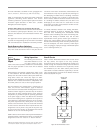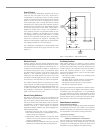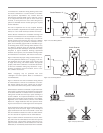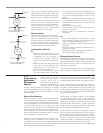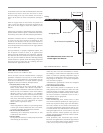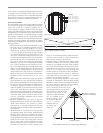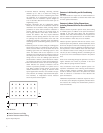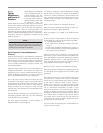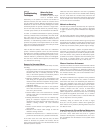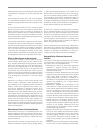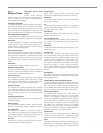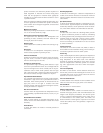
APPLICATIONS GUIDE: SYSTEM SMOKE DETECTORS
18
product evaluation, that maintains periodic inspection of
listed equipment or materials and whose listing states
either that the equipment or material meets appropriate
standards or has been tested and found suitable for use in
a specified manner.
Note: The means for identifying listed equipment may vary
for each organization concerned with product evaluation,
some of which do not recognize equipment as listed unless
it is also labeled.
Maintenance Condition
Method of providing annunciation of a smoke detector that
it is out of its listed sensitivity range.
National Fire Protection Association (NFPA)
An organization that administers the development and
publishing of codes, standards, and other materials con-
cerning all phases of fire safety.
Nuisance Alarm
An unwanted alarm caused by smoke from cooking or cig-
arettes.
Obscuration
A reduction in the atmospheric transparency caused by
smoke usually expressed in percent per foot.
Particles of Combustion
Substances (products that either remain at the site of burn-
ing such as ash, or scatter as volatile products) resulting
from the chemical process of a fire.
Photoelectric Smoke Detector
In a photoelectric light scattering smoke detector, a light
source and a photosensitive sensor are so arranged that the
rays from the light source do not normally fall on the pho-
tosensitive sensor. When smoke particles enter the light
path, some of the light is scattered by reflection and refrac-
tion onto the sensor, causing the detector to respond.
Projected Beam Smoke Detector
In a projected beam detector the amount of light transmit-
ted between a light source and a photosensitive sensor is
monitored. When smoke particles are introduced into the
light path, some of the light is scattered and some
absorbed, thereby reducing the light reaching the receiver,
causing the detector to respond.
Rate-of-rise Heat Detector
A device which will respond when the temperature rises at
a rate exceeding a predetermined amount, usually 15° per
minute.
Remote Maintenance Condition
NFPA 72 listed method of providing annunciation at the
control unit that the smoke detector is outside of its listed
sensitivity.
Smoke Detector
A device that detects the visible or invisible particles of
combustion.
Smoothing Algorithms
A method of “smoothing out” a detector’s interpretation of
sudden, short-duration increases in obscuration within the
sensing chamber, intended to reduce the occurrence of nui-
sance alarms.
Spot (Point) Detector
A device whose detecting element is concentrated at a par-
ticular location. Typical examples are bimetallic detectors,
fusible alloy detectors, certain pneumatic rate-of-rise detec-
tors, most smoke detectors and thermoelectric detectors.
Stratification
An effect that occurs when air containing smoke particles
or gaseous combustion products is heated by smoldering
or burning material and, becoming less dense than the sur-
rounding cooler air, rises until it reaches a level at which
there is no longer a difference in temperature between it
and the surrounding air. Stratification can also be caused
by forced ventilation.
Trouble Supervision
The ability of a fire alarm control unit (FACU) to detect a
fault condition in the installation wiring, which would pre-
vent normal operation of the fire alarm system.
Thermal Lag
When a fixed temperature device operates, the temperature
of the surrounding air will always be higher than the oper-
ating temperature of the device itself. This difference
between the operating temperature of the device and the
actual air temperature is commonly spoken of as thermal
lag, and is proportional to the rate at which the tempera-
ture is rising.
Two-wire Compatibility
Per NFPA 72, 1999 edition: “All fire detection devices that
receive their power from the initiating device circuit or use
a signaling line circuit of a fire alarm control unit shall be
listed for use with the control unit.”
Two-wire Smoke Detector
A smoke detector which initiates an alarm condition on the
same two wires that also supply power to the detector.
Unwanted Alarm
Any false alarm or nuisance alarm.
Wireless Smoke Detector
A smoke detector which contains an internal battery or
batteries that supply power to both the smoke detector and
integral radio frequency transmitter. The internal power
source is supervised and degradation of the power source
is communicated to the control panel. On stimuli, the
detector transmits a radio signal to a repeater or Fire Alarm
Control Unit (FACU) that in turn generates a signal or sta-
tus condition.



